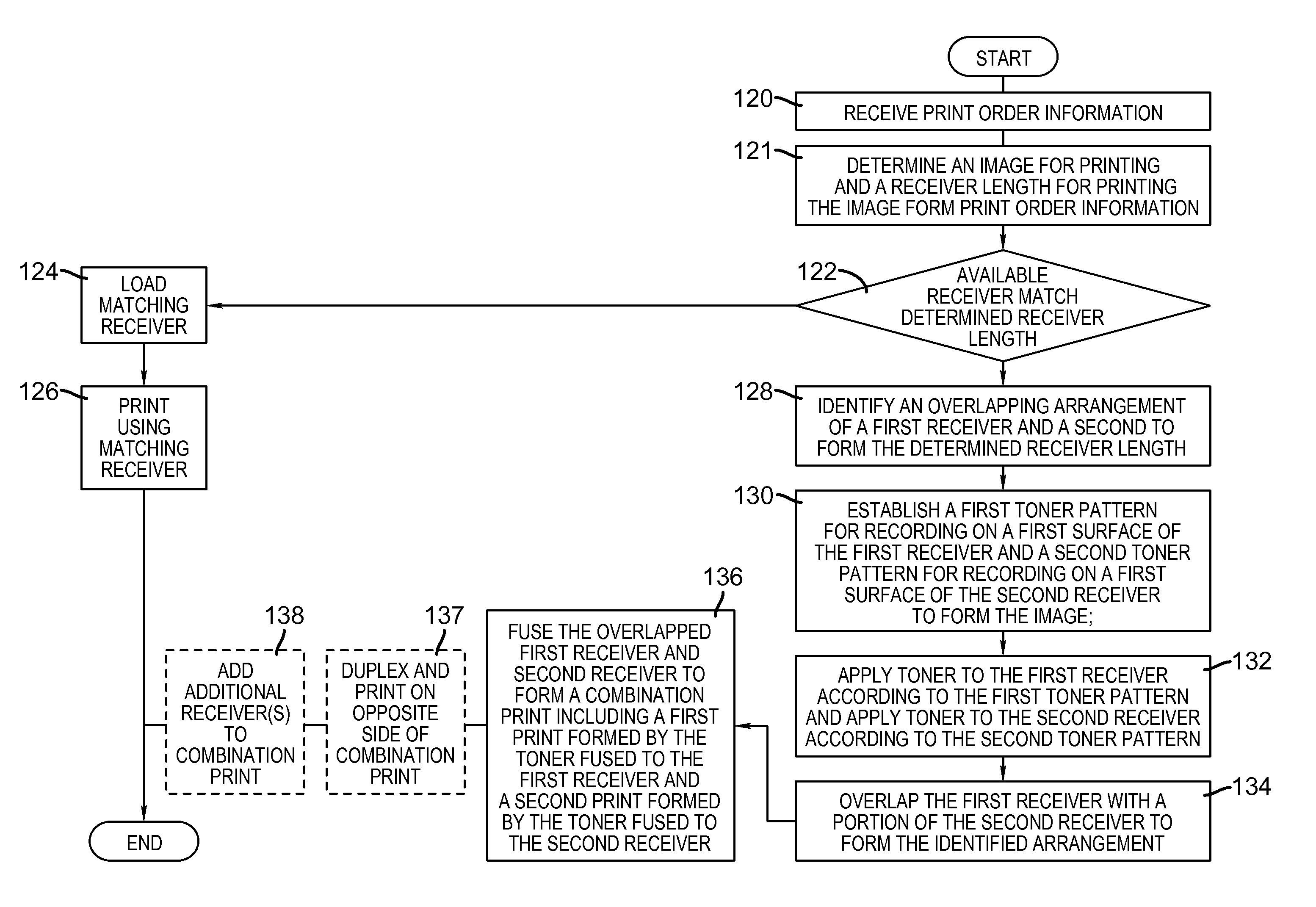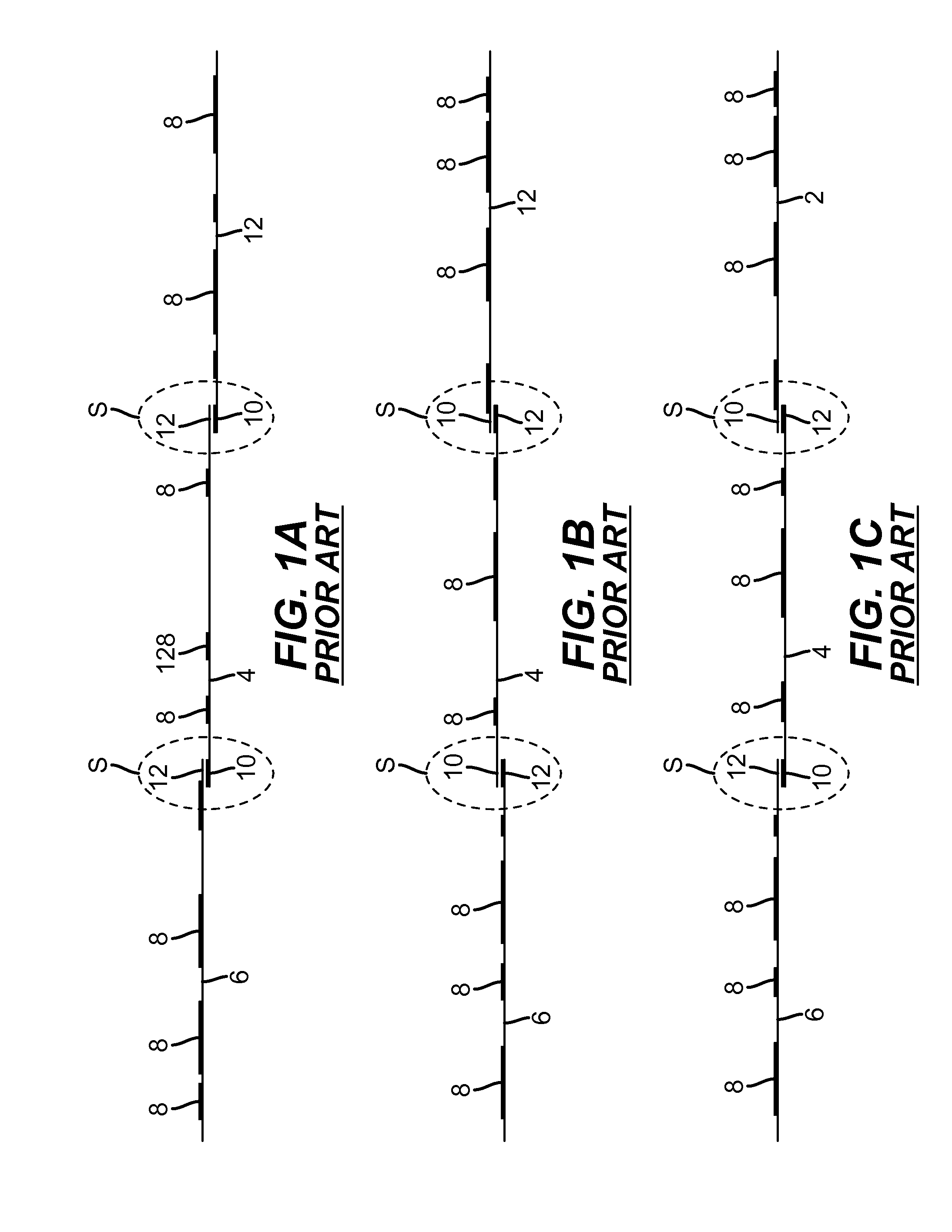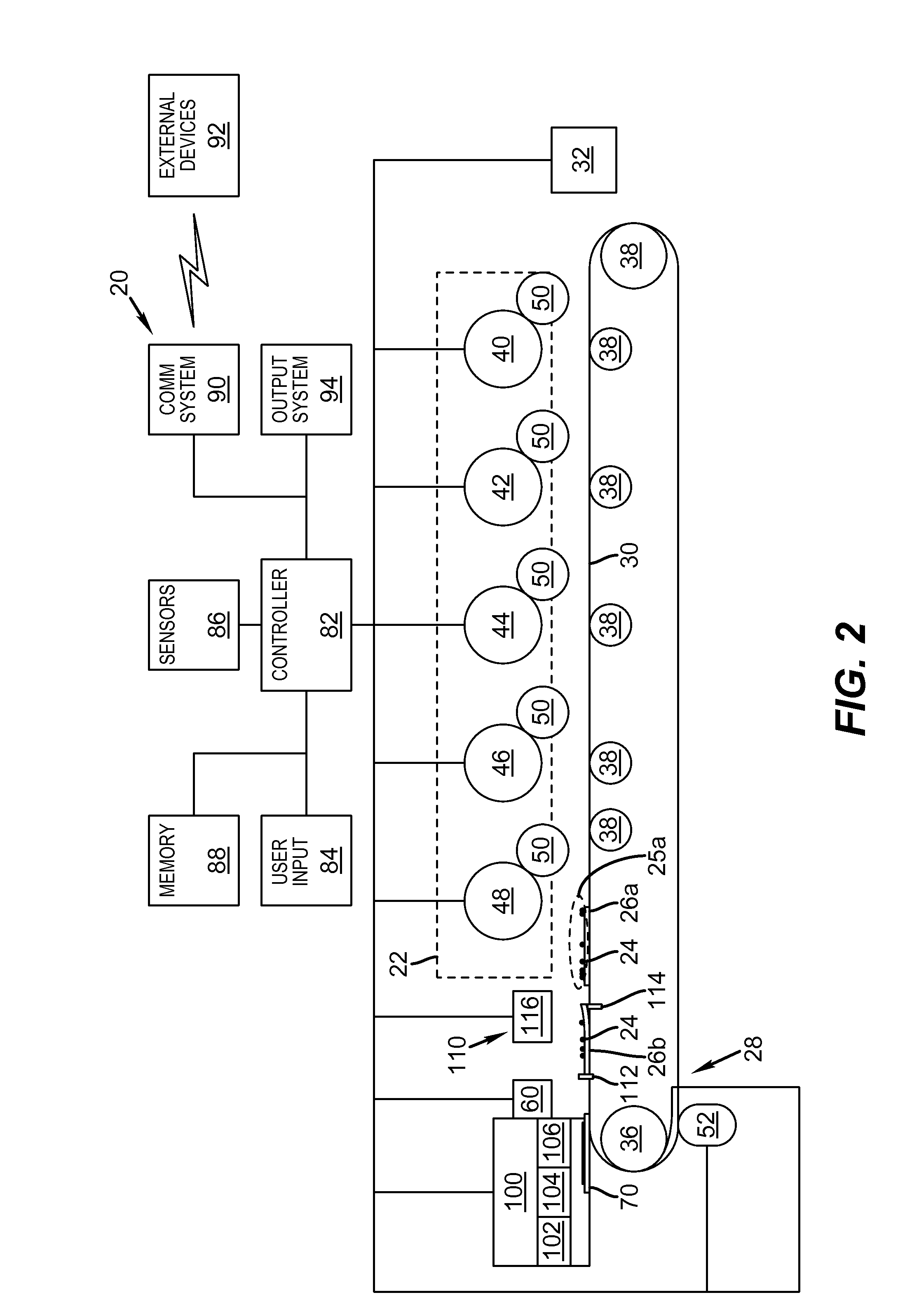Apparatus for making combination prints with pleasing appearance
a combination print and print technology, applied in the field of printing, can solve the problems of delay in printing, add significant costs to the printing process, and use of either form of finishing, and achieve the effect of reducing the visual impact of image artifacts
- Summary
- Abstract
- Description
- Claims
- Application Information
AI Technical Summary
Benefits of technology
Problems solved by technology
Method used
Image
Examples
first embodiment
[0066]FIG. 3 shows a flow chart depicting first embodiment of a method for forming prints of a determined length. As is shown in the embodiment of FIG. 3, in a first step, a print order is received including information from which an image to be printed and a receiver length L for printing the image can be determined. The print order can be received, for example, from communication system 90, user input system 84, or memory 88 (step 118).
[0067]Printer controller 82 uses the information in the print order to determine an image for printing and a length of receiver L to be used in printing the image (step 120). In this regard, the print order can generally comprise any type of data or instructions that printer controller 82 can use to determine an image for printing and a length L of the receiver onto which the determined image is to be printed. For example, and without limitation, the print order can comprise image data such as an image data file that defines the determined image and...
second embodiment
[0159]In a second embodiment, shown in FIG. 21, an edge concealment toner pattern 360 is applied in separate layers as can be applied by passing first receiver past print engine 22 more than once. For example, a first layer 372 of a masking toner 362 can be applied using a toner that matches the color of first receiver 26a or second receiver 26b. Where this is done, a second layer 374 of image forming toner can be applied in one or more additional layers formed over the first layer 372. For example, where first receiver 26a and second receiver 26b are white paper type receivers first layer 372 could be formed from a white toner, such as would be obtained with toner particles containing high dielectric constant materials such as TiO2, BaTiO3, or SrTiO3 while second layer 374 having first toner image 25a can be applied with an imaging pattern.
[0160]In other embodiments, a portion of the edge concealment toner pattern 360 can be provided on second edge 192 of second receiver 26b during...
PUM
 Login to View More
Login to View More Abstract
Description
Claims
Application Information
 Login to View More
Login to View More - R&D
- Intellectual Property
- Life Sciences
- Materials
- Tech Scout
- Unparalleled Data Quality
- Higher Quality Content
- 60% Fewer Hallucinations
Browse by: Latest US Patents, China's latest patents, Technical Efficacy Thesaurus, Application Domain, Technology Topic, Popular Technical Reports.
© 2025 PatSnap. All rights reserved.Legal|Privacy policy|Modern Slavery Act Transparency Statement|Sitemap|About US| Contact US: help@patsnap.com



